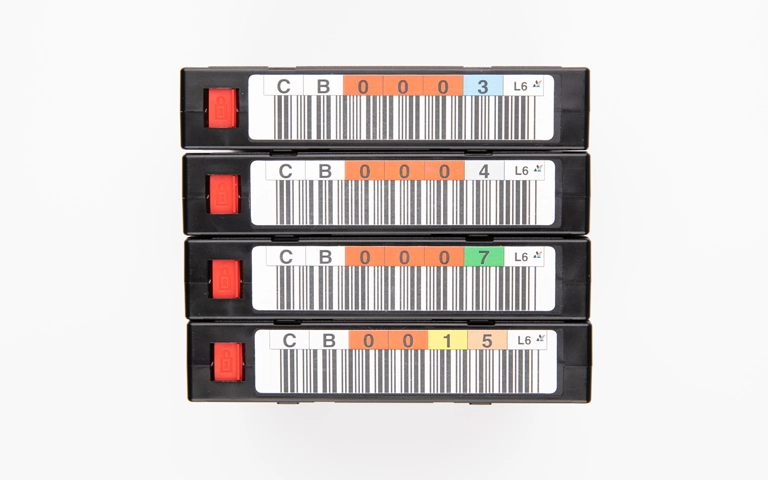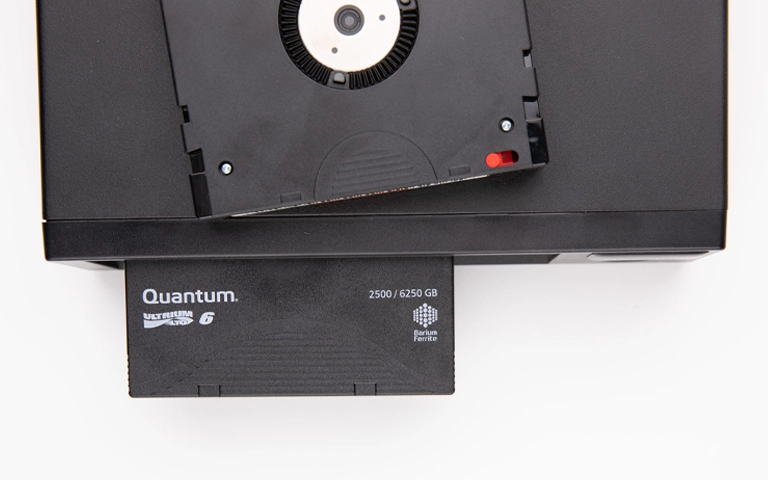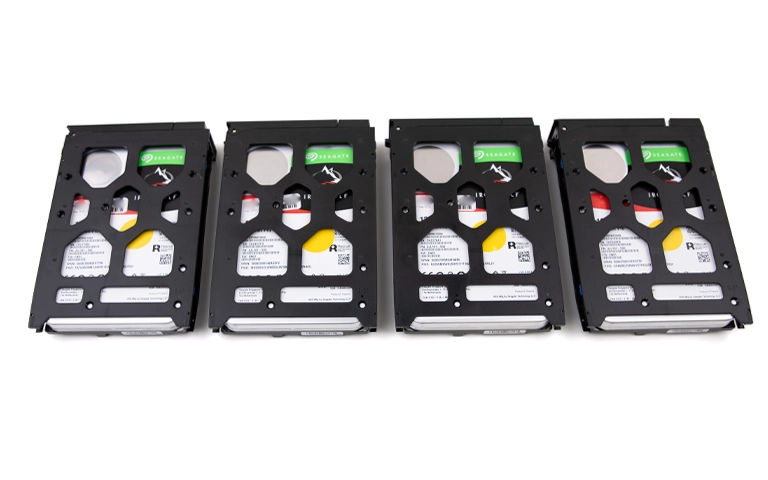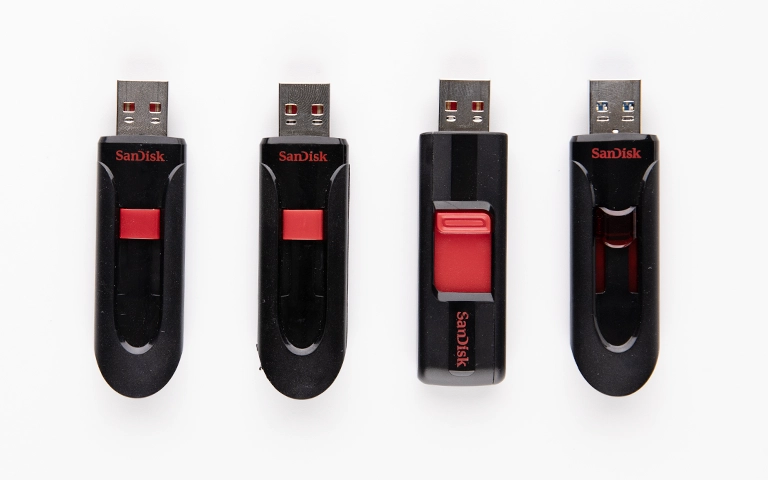LTO (Linear Tape-Open) tapes remain one of the most reliable long-term storage solutions used by enterprises, institutions, and government agencies. They offer high capacity, durability, and cost-effectiveness, making them a key part of backup and disaster recovery strategies. However, when something goes wrong, recovering data from LTO tapes is not a simple plug-and-play task.
This guide will help you understand what makes LTO recovery challenging, what tools are required, and what steps professionals take to safely extract data from failed, corrupted, or unreadable tapes.

What Is LTO and Why It’s Still Used Today
LTO is a magnetic tape-based data storage format designed for high-capacity backups and archiving. As of LTO-9, a single cartridge can store up to 18 TB of native data and up to 45 TB with compression. Despite the shift toward cloud and disk storage, LTO tapes are still used for:
- Air-gapped protection from ransomware
- Cold storage of large data volumes
- Long-term backup retention policies
Many organizations still rely on LTO tapes because of their reliability and low cost per terabyte.
Why Data Recovery from LTO Tapes Is So Difficult
While LTO tapes are extremely durable, recovering data from them requires specialized knowledge and tools. Below are the main reasons why LTO recovery is considered one of the most technically complex forms of data restoration.
1. Proprietary Backup Software
Most LTO tapes are written using backup applications such as:
- Veritas NetBackup
- IBM Spectrum Protect (TSM)
- Commvault
- Veeam
- Arcserve
- HP Data Protector
Each of these platforms uses its own proprietary format and block structure. Without access to the original backup software catalog or version, the data cannot be interpreted using standard tools.
2. Lack of a Traditional File System
Unlike hard drives or SSDs that use common file systems like NTFS or ext4, tapes store data sequentially using block headers, filemarks, and metadata streams. This makes it impossible to browse tape content like a normal folder.
If any of these blocks are damaged due to age, contamination, or physical wear, the rest of the tape content may become unreadable unless it is manually reconstructed.

3. Drive and Generation Compatibility
To read an LTO tape, you need a drive that matches the tape generation. For example:
- An LTO-7 drive can read LTO-6 and LTO-5 tapes
- An LTO-9 drive can read only LTO-8 and LTO-7 tapes
In many cases, you also need the same drive model and sometimes even the same firmware version that was used to write the data. Using the wrong drive can result in read errors or even physical damage to the tape.
4. Environmental Damage
Tapes are sensitive to humidity, temperature changes, and magnetic fields. Common causes of data loss include:
- Moisture exposure or condensation
- Mold or contamination on the tape surface
- Misalignment due to improper rewinding
- Wear from excessive reuse
Once physically damaged, the tape may require re-spooling, surface cleaning, or manual tape reel adjustments in a cleanroom environment.
Get a Free Consultation.
Our recovery experts are ready to assess your device and guide you through the safest path to recovery. Fill out the form to get started.
"*" indicates required fields
Understanding LTO Tape File Structures
There are two main ways data can be written to LTO tapes:
A. Proprietary Backup Format
This is the most common format where tapes are written using enterprise backup software. The data is segmented into blocks, often compressed and sometimes encrypted. The tape does not use a traditional file system but relies on the software’s internal catalog to rebuild the directory structure.
Recovery from these tapes requires reverse engineering of metadata or access to the original backup software and catalog files.
B. LTFS (Linear Tape File System)
LTFS was introduced with LTO-5 and allows tapes to be mounted as if they were external hard drives. Benefits include:
- File-level browsing
- Drag-and-drop functionality
- Compatibility with macOS, Linux, and Windows
However, LTFS also presents recovery challenges. If the index file or metadata becomes corrupted, the entire file system can break. In such cases, data recovery involves raw parsing of the tape blocks and manual reconstruction of the directory structure.

Tools and Software Required for LTO Tape Recovery
Recovering data from LTO tapes involves a combination of hardware, drivers, and low-level tools. Here’s what professionals use:
Your Data Security Is Our Priority
Data privacy isn’t optional. It’s our commitment. Our secure recovery process ensures your sensitive information stays protected from start to finish.
HIPAA Compliant
GDPR Compliant
Secure Facility
NDA Available
Trust in certified security. Start your recovery today! Call Now: 888.611.0737
Hardware Requirements
- LTO drive that matches the tape generation
- SAS or SCSI Host Bus Adapter
- Cleanroom tape cleaning tools
- Proper calibration and alignment equipment
Software Tools
- IBM LTFS Tools (for tapes using LTFS)
- ddrescue-tape and mt-st utilities (Linux environments)
- Hex editors for manual analysis
- Forensic recovery platforms like TapeDump or proprietary software
- Proprietary utilities provided by backup software vendors (when available)
Recovery engineers may also write custom scripts to rebuild data structures when no software tools are available for proprietary formats.
Common Recovery Scenarios for LTO Tapes
Here are examples of when professional recovery services are needed:
- The backup software is no longer available or the catalog is lost
- The tape has been exposed to moisture, mold, or fire
- Read errors occur even when using the correct LTO drive
- LTFS file system is not mounting or showing empty
- The drive shows “media error” or “cartridge error”
- The tape is physically torn, stretched, or jammed in the drive
- Encryption was used and the decryption key is missing or corrupted

How to Prevent Tape Data Loss
While no storage solution is completely failure-proof, here are some best practices to minimize tape data loss:
- Store tapes vertically in temperature- and humidity-controlled environments
- Use proper labeling and maintain a detailed tape inventory
- void excessive overwriting or using tapes beyond their rated duty cycles
- Perform periodic test restores to verify tape readability
- Eject tapes properly using the backup software interface
- Keep backup software and drive firmware up to date
- Use LTFS for easier future access if not relying on enterprise backup systems
When to Contact a Professional Tape Recovery Lab
If your LTO tape is showing read errors, making unusual noises, or has been physically or environmentally compromised, it’s best to stop all operations and consult a tape data recovery professional.
Attempting recovery with incorrect tools or reloading tapes repeatedly can worsen the damage and reduce the chances of full recovery.
Professional data recovery labs like PITS Data Recovery have:
- Cleanroom environments for tape repair
- All generations of LTO tape drives
- Proprietary software and deep knowledge of backup formats
- Experience with disaster recovery, ransomware exposure, and legacy systems

Conclusion
LTO tapes are a powerful and cost-effective storage solution, but recovering data from them is a highly technical process. Between proprietary formats, unique file systems, and hardware dependencies, LTO recovery requires the right combination of tools, expertise, and care.
Whether you are facing environmental damage, software incompatibility, or legacy archive issues, knowing when and how to get expert help can make the difference between permanent data loss and full recovery.
Need Help with LTO Tape Recovery?
If you’re unable to read your LTO tapes or your backup system is no longer available, we’re here to help.
- Call us at 888.611.0737
- Learn more about our Tape Data Recovery Services
- Submit your case through our Request Help Form
Let our engineers recover your data safely, securely, and professionally.
Watch what our customer saying
Don't Let Data Loss Ruin Your Business
Minimize business disruption. We retrieve lost data fast, so you can focus on what matters.



